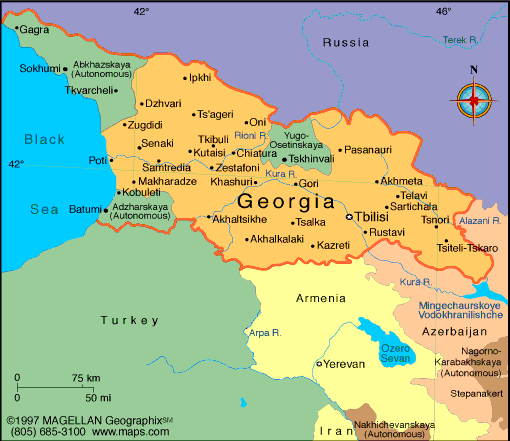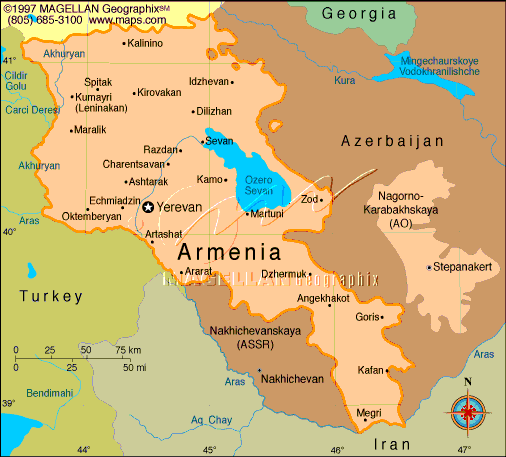Video Testimony Beyond Borders: Ukrainian, Georgian, and Armenian Teachers Share Ideas

In July, Anna Lenchovska, the Institute’s Regional Consultant in Ukraine, and Oleksandr Voitenko, a history teacher, educational trainer, and Shoah Foundation Institute partner, conducted a workshop entitled The Power of Video Testimonies in the Formation of Historical Memory, for 32 teachers from Georgia and Armenia. The workshop was part of Sources of Tolerance, an international and inter-ethnic project aimed at fostering tolerance among children and youth, which took place from July 1-5 in Bakuriani, Georgia.
At the workshop, Lenchovska and Voitenko demonstrated the educational use of video testimony from the Institute’s archive to this diverse group of educators by presenting the innovative methods developed in the Institute’s educational resources, Encountering Memory and Ukrainian Famine of 1932-1933: The Human Dimension of the Tragedy.
Encountering Memory, a multimedia teacher’s guide co-authored by Voitenko and Mikhail Tyaglyy, is the first educational resource in Ukraine to feature the medium of video testimony as a pedagogical tool. Based on Spell Your Name, the Institute-produced documentary about the history of the Holocaust in Ukraine, this teacher’s guide is designed to teach students the history of the Holocaust in Ukraine through a series of eleven thematic modules.
Encountering Memory is designed to help teachers from a variety of disciplines—law, ethics, civic studies, philosophy, and literature, to name a few—and their students to deconstruct the film to understand the underlying historical record by watching excerpts of video testimony, as well as by analyzing photographs, reading literary works, and deciphering historical documents. The guide departs from a purely chronological approach to history teaching, and is organized instead around themes pertinent to the history of the Holocaust in Ukraine and still relevant in Ukraine today, such as stereotypes, moral responsibility, freedom, choice, discrimination, propaganda, bystanders, sacrifice, and resistance. Through the analysis of primary and secondary information sources and the deconstruction of the film, students learn about the existence of information gaps in the historical record and are taught to appreciate the role of subjectivity in the construction of history.
The teacher’s guide, and the events, trainings, and materials surrounding its use and distribution, are made possible by the Victor Pinchuk Foundation.
Ukrainian Famine of 1932-1933: The Human Dimension of the Tragedy. The Great Famine of 1932-1933 is a relatively new topic in the Ukrainian school curricula, often complex and controversial in nature. Silenced during the Soviet era, the famine was officially recognized by the Ukrainian government only in 1987, and its root cause is the subject of scholarly and socio-political debate worldwide. Since Ukraine gained its independence in 1991, the Ministry of Education has recognized the critical importance of developing appropriate methodology of teaching the subject, but as of 2009 no manual had been developed for teachers on the national level.
During the Institute’s Encountering Memory training program conducted in 2007-2008, teachers continually expressed a need for new resources dedicated to the famine. Responding to the teachers’ need, the Institute developed Ukrainian Famine of 1932-1933: The Human Dimension of the Tragedy, a multimedia lesson for secondary school teachers in Ukraine. Drawing upon video testimonies of those who lived through the Great Famine—there are approximately 800 testimonies in the Institute’s archive where the famine is discussed—the lesson examines the tragic event from two different perspectives: through the lens of official history, and through the lens of ordinary people.
Continuing in the same pedagogical approach as Encountering Memory, The Human Dimension of the Tragedy, encourages students to understand history through the analysis of video testimony, in conjunction with multiple other historical sources. This lesson also focuses on the development of historical empathy, and encourages students to reflect on the lived experience of history through the words and voices of those who lived through the events. In addition to analyzing the historical facts of the Great Famine, students are invited to discuss the impact it has on contemporary Ukraine and to examine the ways people commemorate the victims of totalitarian regimes in Ukraine and around the globe. This crucial connection with contemporary society encourages students to think independently and critically about the controversy surrounding the Famine and, in a specially-designed student component, students are tasked with researching the available information about the famine and drawing conclusions based on their research.
In addition to presenting these resources, Lenchovska and Voitenko introduced teachers to the content of the Institute’s Visual History Archive related to Georgia and Armenia. The archive consists of nearly 52,000 videotaped interviews with Holocaust survivors and other witnesses, collected in 56 countries and in 32 languages. In their testimonies, in addition to the Holocaust-related experiences, interviewees recount stories about their prewar and postwar life, thus offering a unique source of invaluable information about life in the 20th Century. In all, 94 eyewitnesses—Holocaust survivors, liberators, and rescuers/aid providers, including the 6 who gave their interviews in Georgia—discuss their experiences in that country before, during, and after World War II. In addition, 25 testimonies in the archive include content about prewar, wartime, and postwar life in Armenia. Teachers can use these testimonies to develop their own classroom resources, implementing the innovative methods of teaching with multi-media and enhancing students’ learning experiences with the local content.
Sources of Tolerance is a joint project of the Euro-Asian Jewish Congress and the Congress of National Minorities of Ukraine.
 Map of Georgia
Map of Georgia Map of Armenia
Map of ArmeniaLike this article? Get our e-newsletter.
Be the first to learn about new articles and personal stories like the one you've just read.